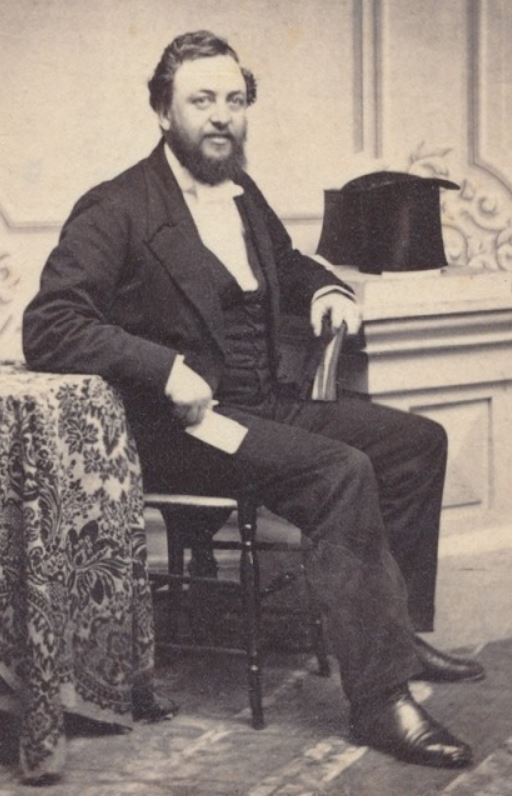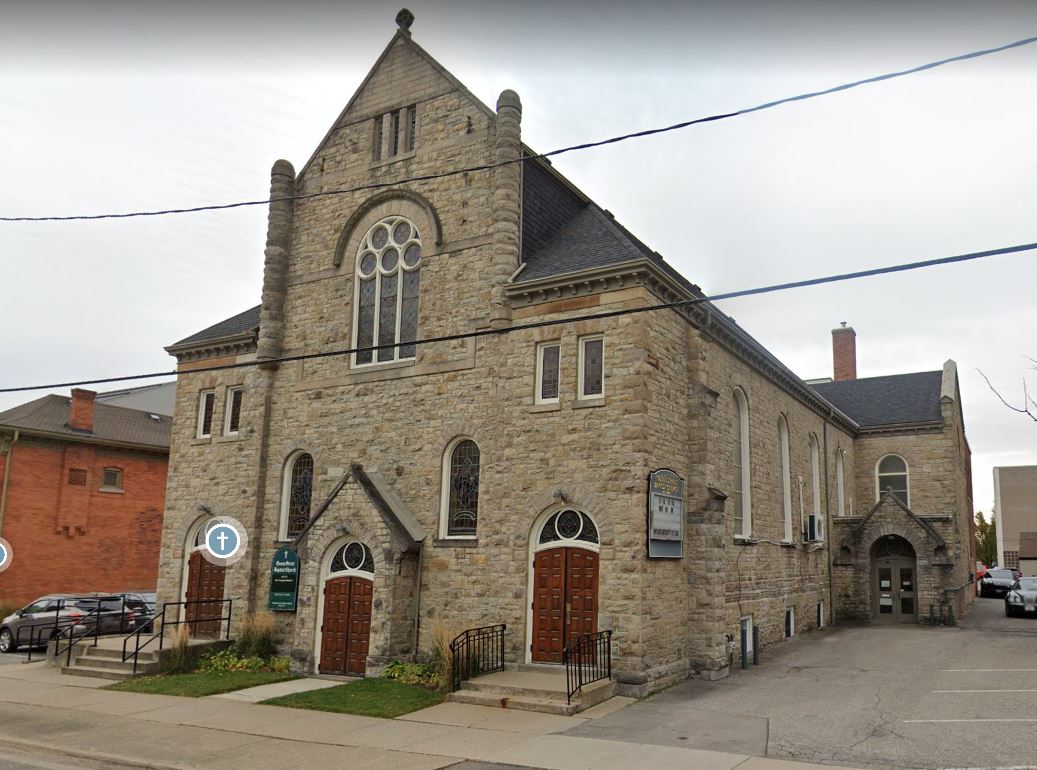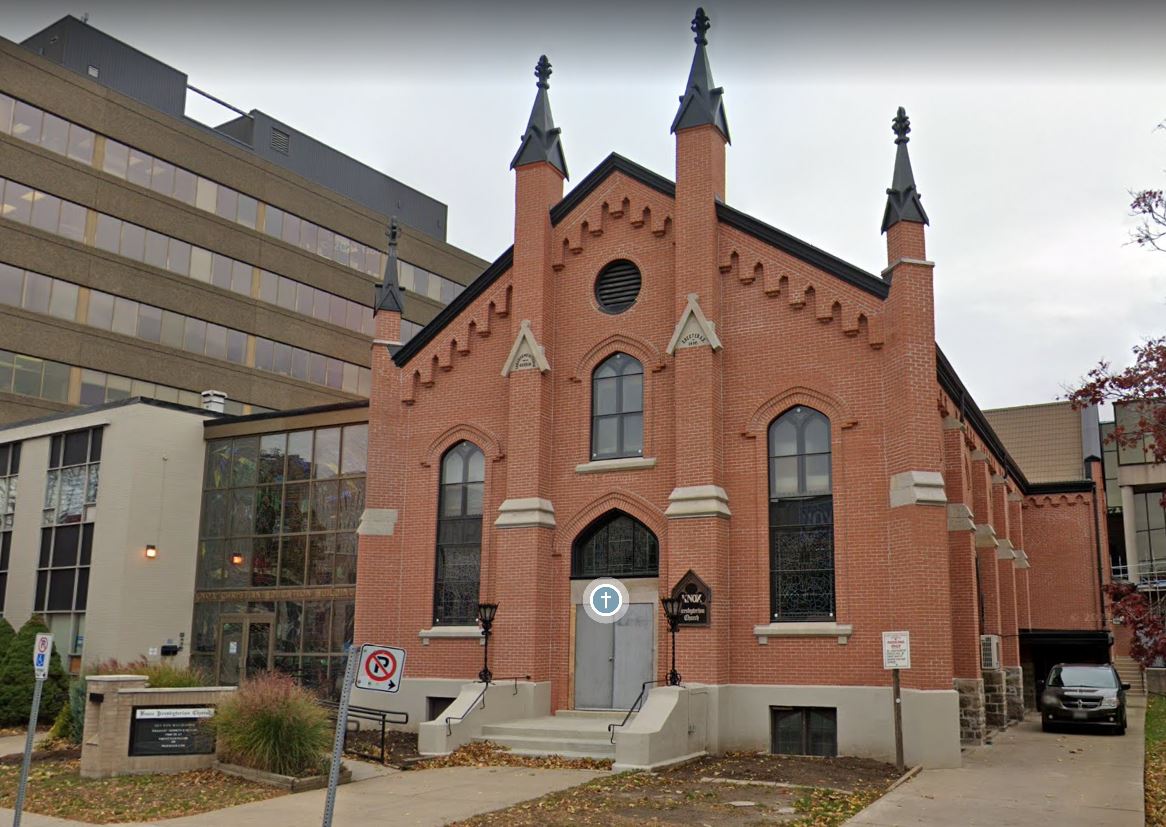

Introduction
The 1880 revival in St. Catharines, Ontario, Canada, was not an outpouring of the Holy Spirit like what we have written about in many of our other revival accounts. This event was a well-planned evangelistic event, similar to these events:
► 1842 Boston Revival – Charles G. Finney
► 1872 London Revival – D. L. Moody
► 1896-1935 – Billy Sunday Revivals
► 1902 Melbourne, Australia Revival – R. A. Torrey
► 1904 Pittsburg Revival – John W. Chapman
► 1949 Los Angeles Revival – Billy Graham

Revivalist Edward Payson Hammond (1831-1910)
E. P. Hammond was the revivalist that was invited to come to the city of St. Catharines to hold meetings for the churches in that city. Here are a few of the notable things about that man:
► He attended school at Williams College, Union Theological Seminary, and the Theological Seminary of the Free Church in Edinburgh, Scotland.
► He was ordained in the Presbyterian Church in 1863.
► Beginning in 1864 he worked with Dwight L. Moody.
► From 1866-1868 he conducted an extended tour through Great Britain, France, Italy, Egypt, and Palestine.
► During his time in Great Britain, he held services for 6 weeks and was instrumental in establishing the “Children’s Special Service Mission” (today known as the Scripture Union).
► In 1874, his ministry in St. Louis, Missouri, resulted in the addition of 5,000 people to area churches.
► In 1874 he took a missionary tour to Alaska.
► In 1886 he conducted a series of meetings in London, England, extending over seven months.
► He is the author of about 100 books and tracts.
► He wrote many hymns and choruses.

Background to the 1880 St. Catharines Revival
In the fall of 1877, the Rev. W. S. Griffin wrote a letter to E. P. Hammond about the possibility of him coming to St. Catharines to hold services for their community.
Griffin then worked to unite a group of ministers to embrace and support an evangelistic effort in their city. That group came together for a meeting on December 17, 1877, in which it was decided that they would present a proposal to Hammond to come and hold a series of meetings. Hammond had recently conducted ministry in the town of Chatham, Ontario, wherein 1,000 were converted, and the information about that successful ministry led the group to be in support of Hammond’s ministry in St. Catharines.
Griffin then went to London, Ontario, to meet with Hammond to get a commitment for him to come in January, 1880, and he agreed to come.
Uniting for this city-wide ministry were at least four denominations:
► Methodist
► Presbyterian
► Baptist
► Episcopalian
Unifying the Churches
To unite the participating congregations for the upcoming work, unifying prayer meetings were held, beginning on Sunday, January 4, 1880, when ministers preached in each other’s churches (commonly known as exchanging pulpits).
Extraordinary Prayer
A “Week of Prayer” was initiated beginning on Monday, January 5, when unified church services were held twice each day that week. This strong emphasis on unity and prayer created a deep interest and increase in the exercise of faith for what they were believing God to do during the upcoming meetings.
Arrival of Hammond in St. Catharines
Hammond arrived in St. Catharines on Friday, January 9, 1880, and held his first meeting at St. Paul Street Methodist Church that afternoon. The topic of his sermon was “the Spirit’s descent and work on the day of Pentecost,” and he exhorted all to be “filled with the Spirit.”
Hammond Was an Unheard-of Minister
Prior to his arrival, there were possibly only 10 people in St. Catharines that had ever heard of E. P. Hammond, even though he had previously conducted successful ministry for 4.5 years throughout Europe, including preaching in London, England’s Metropolitan Tabernacle, pastored at the time by the famous Charles Spurgeon.

Queen Street Baptist Church: St. Catharines, Ontario
Song Services
The Saturday service was held at Queen Street Baptist Church, and with Hammond having written numerous hymns, the people recognized that he placed a special emphasis on singing. Some of the hymns and choruses written by Hammond can be found here.
Sunday, January 11
On this Sunday the meetings were held at St. Paul Methodist Church. The building was so full that many could not get inside, and the overflow crowd was directed to a nearby church for a service conducted there by another minister.
Hammond’s sermon on this day was mostly for the benefit of the Sunday School and its teachers, as Hammond had a strong emphasis on ministry to children. The sermon he preached captured the attention of many children, and with teachers being strategically positioned at the ends of each pew, they enlisted many children into their Sunday School classes.
Complaints about Hammond
The initial impression of Hammond was that he was “undignified,” “frivolous,” and the services were not what the people were expecting.
Even though people were grumbling about Hammond’s preaching, they kept coming to the services. Some of the negative comments were:
► “There is a lack of dignity about him.”
► “He tells too many stories.”
► “He rambles in his discourse.”
The basis for these complaints was that Hammond was mostly focusing his sermons on children.
Hundreds of Children Converted
At the end of the first week conversions among the children numbered into the hundreds, and the numbers were constantly increasing. The conversion of children led to the conversion of their parents.

Knox Presbyterian Church, St. Catharines, Ontario
Monday Meeting
The meeting on Monday evening took place at Knox Presbyterian Church, with the building being filled to capacity long before the 7 p.m. start time. The overflow crowd assembled at the Baptist Church, with another minister conducting the service there.
The meetings up to this point were primarily focused on children, intending to help build the Sunday Schools. The sermon on this day, however, shifted its focus onto the revival of professing Christians and the salvation of sinners, with the sermons carrying tremendous conviction power, as one person commented:
Some who have come prepared if not to mock, yet to resist, are melted into submission, and weep and pray for help at the throne of grace.
One man reluctantly attended a meeting, and following the service he said:
[I] Do not recollect where the text was taken from, but this I do know, an indescribable feeling took possession of my entire being. An allusion was made during the sermon to loved ones who had gone before to that bourne from whence no traveler returns.
The presence of God was so real, and the people so excited to see what God was doing in many people’s lives, that they didn’t want to leave the church after services concluded.
Typical Structure of Services
Services were conducted 3 times per day. It was understood that the daytime meetings could be attended as people had the time. They were allowed to come in, even for only a few minutes, if that is all they had time for.
For immediate counseling for those responding to the invitation to accept Christ at the conclusion of his sermons, Hammond used a lecture room in the rear of the church. It was there that “experienced Christians” would speak with those responding to the Gospel. After they were counseled, they were invited to sign a covenant card.
► The meeting in the lecture room lasted about half an hour.
► While that meeting was taking place, those in the sanctuary were given exhortations to live godly lives, to witness to others, etc.
► Prior to closing, testimonies were read from those who had previously submitted them—testimonies from both children and adults.
► Testimonies were also given openly by individuals who were recently converted or were revived from a backslidden state.
Spreading Revival
On Sunday, January 25, there were 3,000 present at the meeting held at the local militia’s Drill Shed (armory). Because it wasn’t a church building, many people who were unaccustomed to church attendance were present.
While the ministry was ongoing in St. Catharines, a similar work was occurring in the southeastern suburb of Merritton. “Quite a few” of the people in St. Catharines, when they heard what God was doing in Merritton, volunteered to go and help. Others were praying for that ministry’s success, asking the Lord for the spreading of revival fires into other towns.
Unity
The barriers of denominationalism by this time were completely removed as the ministers were working together, with one minister commenting:
It is wonderful how the city is agitated. It is the subject of conversation in every family, by the side of every hearthstone, in every store and in every workshop. Knots of men discuss it upon the corners of the streets, and the all-pervading questions are, ‘Where will it end?’
End of the Scheduled Services
Though documentation is lacking concerning the date for the last meeting, it is assumed that it concluded at the end of January 1880, with the final meeting being held at the St. Paul Street Church, with the largest crowd ever in that building.
Sources
► The Revival in St. Catharines by J. H. Durham
► Sketches of Palestine by E. P. Hammond
Return to List of Revival Stories
Chet & Phyllis Swearingen:
Office: (260) 920-8248
romans1015@outlook.com
Beautiful Feet
P.O. Box 915
Auburn, IN 46706

